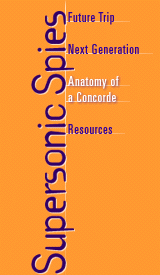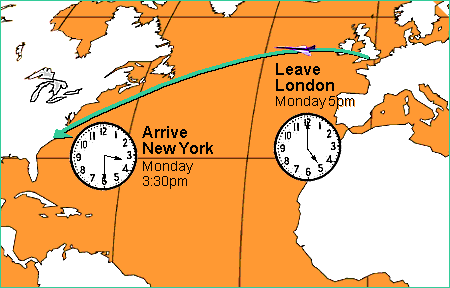|
|
|
|
 |
SpeedThe Concorde cruises at Mach 2, or twice the speed of sound*. That means you can get to places in a Concorde faster than in a regular airplane. In fact, you can "arrive before you leave!" How? Well, it's a matter of timing. For example, if you flew from London to New York, it would take you 3.5 hours. You could leave London at 5 PM and arrive in New York at 3:30 PM—1.5 hours before time of take-off! Why? Because you crossed 5 time zones (setting the clock back 5 hours) in just 3.5 hours.Concorde Speed Facts
 * The generally accepted speed of sound in air is 344 m/sec (1,130 ft/sec or 758 mi/hr) at 20°C (68°F). (back) Future Trip | Next Generation | Anatomy of the Concorde Teacher's Guide | Resources | Transcript | Supersonic Spies Home Editor's Picks | Previous Sites | Join Us/E-mail | TV/Web Schedule About NOVA | Teachers | Site Map | Shop | Jobs | Search | To print PBS Online | NOVA Online | WGBH © | Updated November 2000 |